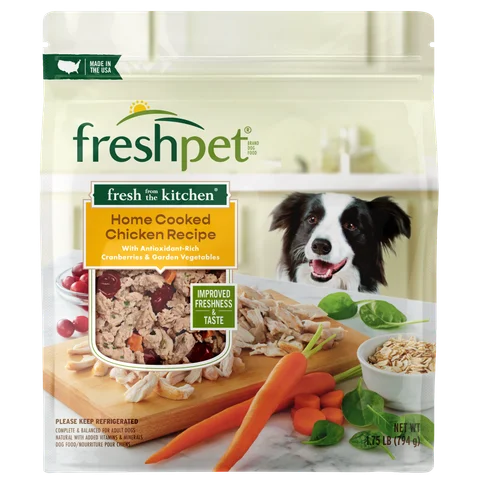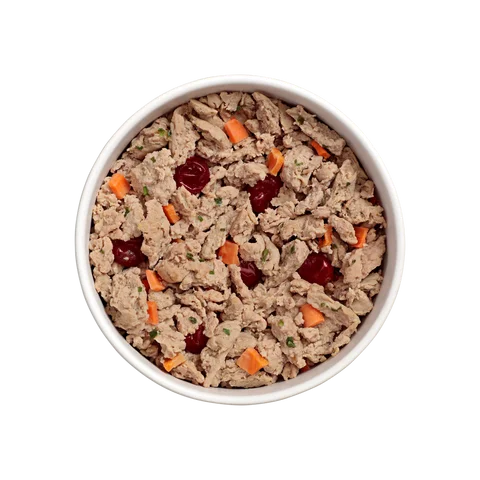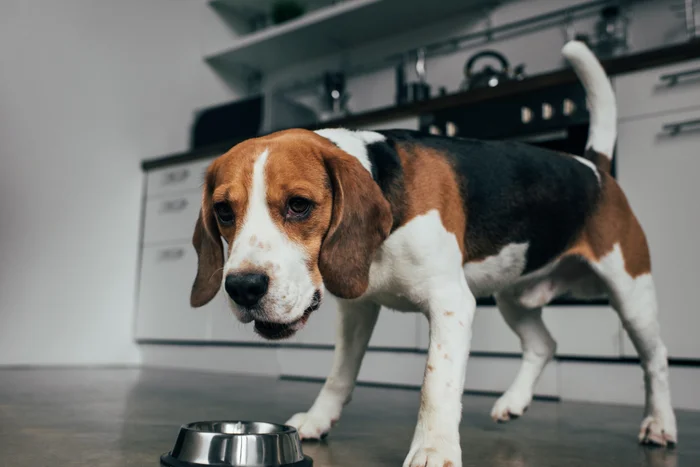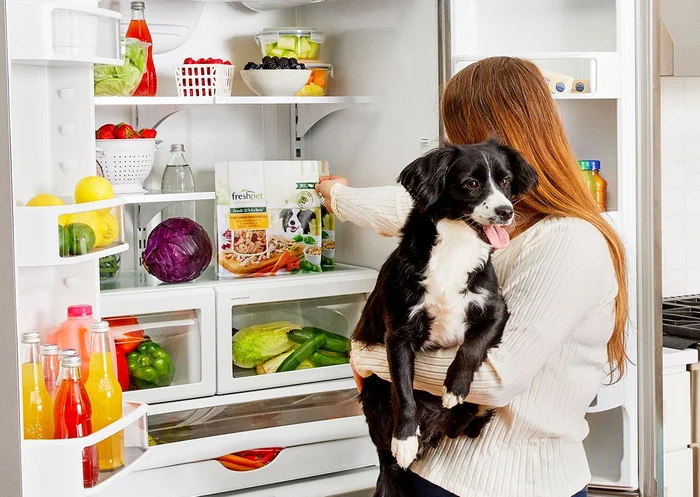


written by Tori Holmes
A consistent mealtime routine is essential for your dog’s health, happiness, and overall well-being. Not only does it help regulate their digestion, but it also reinforces good behavior and strengthens the bond between you and your furry friend.
One of the reasons why pet parents love Freshpet is that they can find a variety of fresh food for dogs made with high-quality ingredients and no artificial preservatives. Whether your pup prefers rolls and bagged meals, there’s a recipe for every taste and dietary need.
Not sure which recipe is best for your dog? Take our quiz to get a personalized recommendation based on your dog’s age, size, and health needs.
Once you’ve chosen the right food, it’s time to create the perfect mealtime routine for both you and your pup.
● Set a consistent feeding schedule: Dogs thrive on routine, so it’s recommended to feed them at the same time every day. A predictable feeding schedule helps with digestion and prevents begging or anxiety around food, as your dog will know when to expect their next meal. Most adult dogs do well with two meals per day, while puppies need smaller, more frequent meals.
● Measure portions for a healthy weight: Instead of eyeballing the amount of food you feed your dog, take the time to measure out the correct serving size.Serving sizes will differ according to several factors, like your pet’s age and weight, but every Freshpet recipe includes feeding guidelines so you know exactly how much to serve at each meal.
● Create a calm feeding environment: A quiet, low traffic feeding spot helps your dog eat calmly without distractions. This is important because stress or excitement during meals can lead to rapid eating, which can cause life-threatening gastric dilatation and volvulus (GDV). If you have multiple pets, feeding them in separate areas with their own dedicated bowls can also minimize food-related tension, such as food guarding.
● Use mealtime to reinforce training: Practicing commands like "sit" or "wait" before meals reinforces your dog’s training and helps make sure that they display good manners during mealtime. These commands can also help your dog stay calmer during the meal, which helps to reduce frantic eating and its associated risks.
● Stick to a post-mealtime routine: After eating, give your dog time to digest before playtime or walks to prevent digestive issues. You can also take them out for a short potty break 15 to 30 minutes after meals, as this taps into their natural elimination schedule. This can be very beneficial during a puppy’s house training process.
● Monitor and adjust as needed: Having a consistent mealtime routine will also help you see when something is out of the ordinary. If you notice any changes in your dog’s appetite or digestion, speak to your veterinarian – they will be able to get to the bottom of what’s going on. As your dog ages, their mealtime routine will also need some adjustments. For instance, you may want to consider switching to a recipe that is tailored for senior dogs to ensure they’re getting everything they need during their golden years.
We hope you now have everything you need to set your pup up for a lifetime of good eating habits!
















